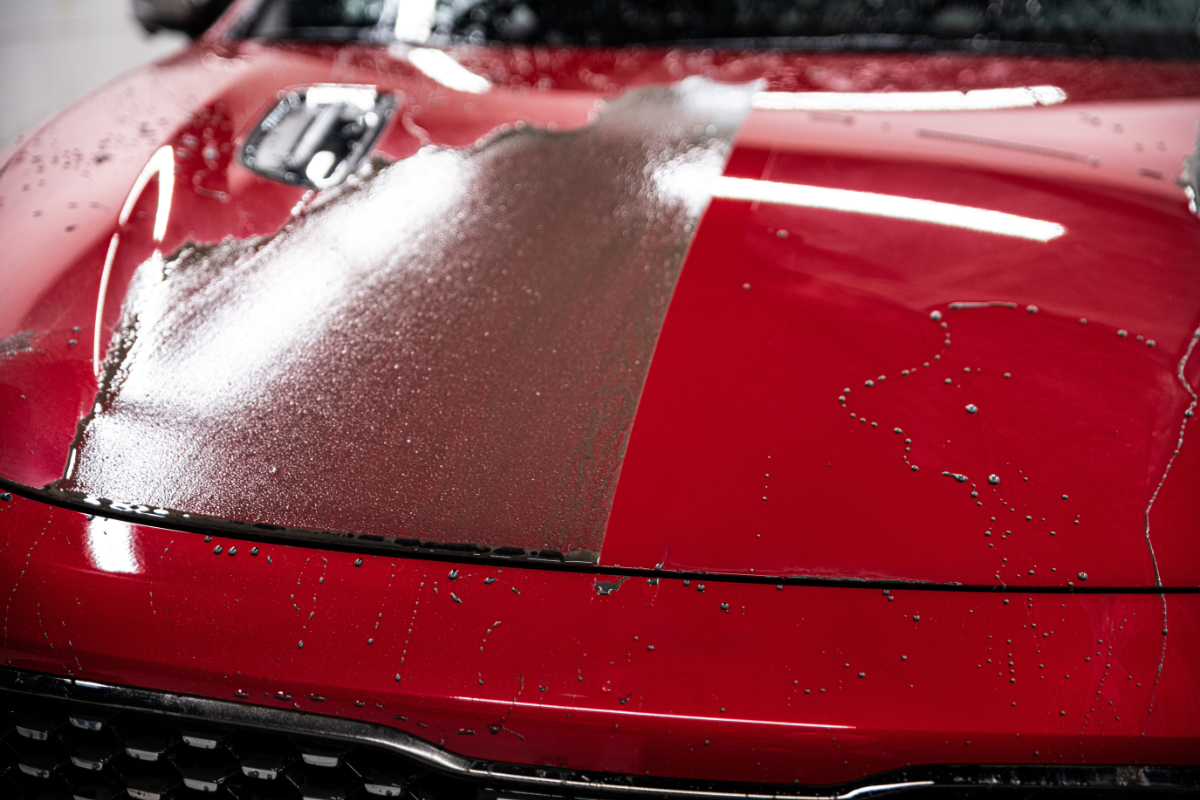Transform Your Automobile's Look with Ceramic Coating Philadelphia Professionals
Wiki Article
Why Ceramic Layer Is the Ultimate Solution for a Remarkable End Up
Ceramic finish has emerged as a leading option for those looking for a remarkable surface for their automobiles, thanks to its exceptional resilience and protective attributes. What elements really set ceramic coating apart?What Is Ceramic Finishing?

When applied appropriately, ceramic layer develops a hydrophobic surface that wards off water and dirt, making it easier to preserve and clean up. Unlike conventional waxes or sealers, which commonly provide temporary defense, ceramic coatings can last for several years, relying on the product top quality and application method. The process of using ceramic coating calls for thorough preparation, including thorough cleaning and occasionally repaint adjustment, to ensure optimum bonding and effectiveness.
Ceramic finishings are not limited to auto surface areas; they can additionally be used on different materials, including glass, metal, and plastics, giving a flexible option for improving defense. In general, ceramic layer represents a considerable development in surface security innovation, integrating both practical and aesthetic advantages for a large range of applications.
Benefits of Ceramic Finishing
While many surface defense options exist, the advantages of ceramic finishing stand apart because of its unique homes and long-lasting efficiency. Among the key benefits is its remarkable toughness. Ceramic Coating Philadelphia. Unlike typical wax or sealers that require frequent reapplication, ceramic layers provide a durable layer that can last for several years, considerably decreasing maintenance effortsOne more remarkable benefit is boosted security versus environmental pollutants. Ceramic finishings develop a hydrophobic surface that pushes back water, dust, and different toxins, making it less complicated to clean. This attribute not just protects the lorry's appearance but additionally reduces the danger of deterioration and oxidation, particularly in rough weather.
In addition, ceramic finishes offer exceptional resistance to UV rays, stopping fading and degradation of paint over time. This UV security is critical for maintaining the aesthetic worth of lorries and surfaces subjected to guide sunshine.
Additionally, the glossy surface accomplished with ceramic finish improves the total aesthetic charm, offering surface areas a showroom-quality shine. Generally, ceramic finishings stand for a significant advancement in surface security technology, offering long-lasting advantages that cater to both functional and aesthetic requirements.
How It Works
Recognizing the science behind ceramic finishings reveals exactly how they offer such exceptional defense and durability. At its core, a ceramic finish is a fluid polymer that chemically bonds with the car's manufacturing facility paint.
The application process includes numerous actions, including surface area prep work, which is essential to attaining optimum adhesion. When used, the finish goes through a treating process, throughout which it hardens and creates a semi-permanent bond with the paint surface. This bond is what distinguishes ceramic coverings from conventional waxes and sealants, giving a longer-lasting safety obstacle that can withstand for years.
Moreover, the density of the covering can enhance its safety high qualities, making sure that it can endure rough problems. Inevitably, the science of ceramic coatings incorporates sophisticated materials with cutting-edge application strategies to deliver an exceptional degree of defense and aesthetic enhancement for cars.
Comparison With Conventional Techniques
When compared to standard paint security approaches such as sealers and waxes,The benefits of ceramic layers end up being specifically evident. While waxes offer a momentary luster, usually lasting a couple of weeks to a number of months, ceramic coverings give a durable safety layer that can endure for numerous years. This durability significantly minimizes the regularity of reapplication, making ceramic coverings a much more cost-effective remedy with time.Additionally, standard techniques often need extensive prep work and several applications to accomplish a satisfactory degree of defense. In comparison, ceramic layers bond at a molecular degree click resources with the car's web surface area, creating a durable shield versus ecological contaminants like UV rays, acid rain, and roadway salts. This bond enhances the car's resistance to scratches and swirl marks, which prevail with typical waxes and sealers.
Additionally, the hydrophobic buildings of ceramic coverings drive away water and dust, causing easier cleansing and upkeep. In contrast, wax and sealant-treated surface areas can bring in crud, demanding even more frequent washing - Ceramic Coating Philadelphia. In general, ceramic coatings not only offer exceptional protection yet additionally deliver a much more visually enticing and enduring finish, developing them as the preferred selection for critical vehicle owners
Application and Upkeep Tips

Using a foam applicator, use the covering in little areas, following the producer's standards concerning density and overlap. Allow sufficient healing time between coats, normally 24 hours, to guarantee More about the author correct bonding. After application, it is crucial to stay clear of exposure to water or severe components for at the very least a week to allow the finishing to completely heal.
In addition, making use of a ceramic upkeep spray can boost the covering's hydrophobic residential properties and longevity. Regular inspections for any type of indicators of wear will assist preserve the finish's honesty and maintain that beautiful coating.
Conclusion
Finally, ceramic covering becomes an exceptional alternative for accomplishing a perfect vehicle surface. Its remarkable resilience, protective qualities, and hydrophobic properties significantly boost the vehicle's look while streamlining upkeep initiatives. By creating a durable bond with factory paint, ceramic layer properly shields versus scratches, UV rays, and ecological impurities. With a lifespan prolonging a number of years, this innovative solution not just protects yet likewise boosts the general aesthetic appeal of vehicles, making it a cost-effective financial investment for automobile enthusiasts.
Report this wiki page